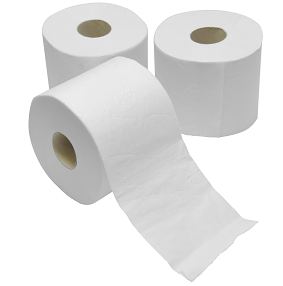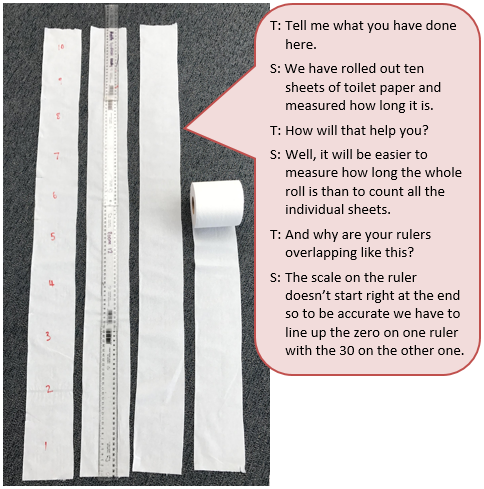How many pieces? (years 4-6)
This counting collections activity engages students in finding the number of sheets in a roll of toilet paper.
Collections can be estimated, organised and grouped strategically for an efficient and accurate count. Students can represent their strategies and counts with numbers, symbols, words and diagrams.
Counting collections promotes number sense, and is an essential foundation for students to be successful mathematicians. Recent literature (e.g. Boaler, 2008) suggests that flexible grouping practices best supports equitable opportunities for student learning.
It is important to share the mathematical focus of the task with students. This task addresses content across multiple strands. Provide students with opportunities to group objects strategically to make the count easier, to work collaboratively, to record their strategies and to share and justify their counts and strategies using a variety of representations. Estimation of quantities and checking by counting promotes number sense. The progression in the sophistication of students’ thinking when asked to count a collection of objects goes from counting in ones, to counting in groups, reasoning additively to reasoning multiplicatively.
Consider the mathematical language your students are likely to use when grouping, counting and measuring and the language you want to develop.
Student agency is promoted if students have choice over their own counting and recording methods. Rather than suggesting particular solutions or counting methods to students, teachers can use enabling prompts to support students who require assistance. Extending prompts can be offered when students have completed the task to build more sophisticated strategies and understandings.
- Toilet rolls
- Rulers and measuring tapes
 Task Introduction
Task Introduction
A wondering for mathematical inquiry can be developed by teachers in consultation with their students.
Possible questions could include:
- I wonder how many individual sheets there are in this toilet roll?
- I wonder how long this toilet roll is? I wonder which toilet roll has the most sheets?
- I wonder which toilet roll could stretch the furthest?
Considerations when planning for the task introduction include:
- Do the students understand the context of the task?
- What key mathematical ideas and language do teachers need to clarify with students in order for them to engage with the task?
Student Exploration of the Task
- While students are exploring the task listen to their mathematical language and thinking particularly around grouping, place value and multiplicative thinking.
- If students are struggling to get started, enabling prompts can be offered but only once students have had sufficient time to struggle with the problem themselves.
Examples include:
Start with counting this part of your collection.
What is the length of 10 sheets?
- Extending Prompts can be offered if students finish quickly or find the task easy. They encourage higher order thinking and generalisation within the same task.
Examples include:
Reorganise the grouping of that collection to count it more efficiently.
I wonder is this roll really double the length?
Which toilet roll would last the longest?
